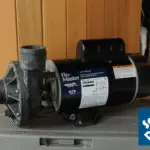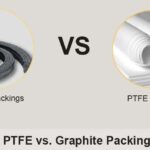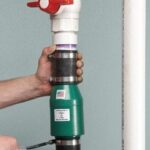Choosing the right siding for your home is a big decision. It’s not just about looks; it’s about durability, cost, and maintenance.
You’re likely weighing your options, and two popular choices stand out: fiber cement siding and brick. Each has its unique benefits and drawbacks. But which one is the best fit for your needs? Imagine having a home exterior that not only boosts your property value but also gives you peace of mind.
This article will dive into the details of fiber cement siding and brick, helping you make an informed decision. Are you ready to discover which option could transform your home into a masterpiece? Let’s get started!

Credit: southatlanticllc.com
Material Composition
Fiber cement siding blends cellulose fibers and cement, offering durability and low maintenance. Brick, made from clay and shale, provides classic aesthetics and excellent insulation. Both materials offer unique advantages for home exteriors.
Material composition plays a crucial role in determining the durability, appearance, and cost-effectiveness of siding materials. Understanding what goes into fiber cement and brick can help you make an informed decision about which is right for your home. This section dives into the specifics, breaking down the core components of each material and their implications for your property.Fiber Cement Components
Fiber cement siding is a blend of cellulose fibers, cement, and sand. The cellulose fibers provide flexibility and prevent cracking. Cement acts as a sturdy binding agent, ensuring the material stays intact under various weather conditions. Sand contributes to the overall texture and appearance, giving fiber cement its distinctive look. During a renovation project, you might have noticed how the fiber cement siding feels remarkably solid yet adaptable. This is due to its unique composition, which balances strength and resilience. Have you ever wondered if your siding can withstand the test of time? Fiber cement’s makeup is specifically designed for longevity, offering you peace of mind.Brick Components
Brick, on the other hand, is composed primarily of clay and shale. These materials are fired at high temperatures to create a dense, durable product. The firing process enhances brick’s resistance to fire and pests, making it a reliable choice for many homeowners. You might recall walking past historic buildings, their brick facades still standing strong after decades, even centuries. This enduring quality stems from the material’s robust composition. Clay and shale, once processed, create a finish that’s both timeless and tough. What qualities do you value most in your home’s exterior? Brick’s composition might align perfectly with your priorities for durability and classic appeal. The difference in materials can significantly impact your home’s aesthetics and maintenance needs. Have you considered how the composition affects installation? Fiber cement is lighter and easier to install than brick. However, brick’s heft contributes to its thermal efficiency and sound insulation. Each material brings unique benefits to the table, prompting the question: What are your priorities for your home’s siding?Durability And Longevity
Choosing between fiber cement siding and brick involves understanding their durability and longevity. Both materials have unique strengths. Homeowners often compare these aspects to decide the best option for their homes. This section explores key factors that contribute to their lasting value.
Weather Resistance
Fiber cement siding offers strong resistance to harsh weather conditions. It withstands rain, snow, and heat effectively. This material prevents moisture damage, maintaining its appearance over time. Brick is also highly weather-resistant. It handles extreme temperatures with ease. Brick provides excellent insulation, helping in energy efficiency.
Impact Resistance
Fiber cement siding is known for its impact resistance. It resists dents and scratches from external forces. This makes it a reliable choice for busy environments. Brick is equally robust against impacts. It provides a solid barrier against flying debris. Brick structures often remain intact, maintaining their original form.
Aesthetic Appeal
Choosing between fiber cement siding and brick involves considering their aesthetic appeal. Both materials offer distinct looks that can enhance your home’s exterior. Let’s explore the design versatility and color options of each.
Design Versatility
Fiber cement siding provides a wide range of styles. You can mimic wood, stone, or stucco with fiber cement. This material allows for creativity in design. Brick offers a classic look. It suits traditional or rustic home styles. Modern brick designs are also available. Brick can be used in patterns or mixed with other materials.
Color Options
Fiber cement siding comes in various colors. You can choose from earthy tones to vibrant hues. The color can be painted or stained. It resists fading over time. Brick colors range from red to brown and gray. Natural brick color is long-lasting. It can be enhanced with different mortar shades. Both materials offer unique color choices.
Installation Process
Choosing between fiber cement siding and brick involves understanding their installation. Each has its own set of steps and considerations. Proper installation ensures durability and functionality. Let’s dive into what each process entails.
Fiber Cement Installation
Fiber cement installation starts with measuring the area. Accurate measurements ensure the right fit. Installers cut the panels to size using special tools. These tools prevent chipping and damage. A breathable moisture barrier goes up next. This barrier protects the home from moisture. Installers then attach the panels to the framework. Stainless steel nails keep the panels secure. Each panel overlaps the next. This overlap provides extra protection against water. Caulking is used to seal joints and edges. This keeps out water and pests. Finally, paint or stain is applied if desired. This adds color and protection.
Brick Installation
Brick installation begins with preparing the foundation. A strong foundation supports the weight of the bricks. Mortar is then mixed to the right consistency. This sticky substance holds the bricks together. Installers lay the first row of bricks, called the course. They check each row for level and alignment. Mortar is applied between each brick. This forms a bond and adds stability. Each subsequent row is staggered. This pattern adds strength to the wall. Once the wall reaches the desired height, it cures. Curing allows the mortar to harden. Finally, installers clean the brick surface. This removes any excess mortar and gives a neat finish.
Maintenance Requirements
Fiber cement siding needs periodic painting and sealing to prevent moisture damage. Brick requires less frequent maintenance, mainly focusing on occasional cleaning. Both materials offer durability, but upkeep varies based on climate and exposure.
When choosing between fiber cement siding and brick for your home, understanding the maintenance requirements is crucial. Both materials offer durability, but they differ significantly in terms of upkeep. Let’s dive into what it takes to keep each option looking its best over the years.Cleaning And Repairs
Cleaning your siding is an essential part of home maintenance. Fiber cement siding typically requires a simple wash with mild soap and water to remove dirt and mildew. A soft brush or a low-pressure garden hose will do the trick, making it a manageable task even for busy homeowners. Brick, on the other hand, is a bit more forgiving when it comes to cleaning. It can handle pressure washing, which makes it easier to blast away stubborn stains. However, you might need to be on the lookout for mortar deterioration, which can require periodic repointing to maintain the integrity of your brickwork. Both materials are generally resistant to pests. However, fiber cement can suffer from cracks over time due to weather conditions, necessitating occasional patchwork.Repainting And Retouching
Fiber cement siding has a significant advantage when it comes to repainting. It holds paint well, often maintaining its color for 10 to 15 years before needing a refresh. This gives you the flexibility to change your home’s color scheme without the hassle of frequent touch-ups. Brick, by contrast, usually doesn’t require repainting. Its natural color and texture can last for decades without fading. However, if you choose to paint brick for a different aesthetic, be prepared for a more permanent commitment, as removing paint from brick can be labor-intensive. Have you ever considered how your climate might affect your siding choice? In humid regions, fiber cement might need more frequent attention due to potential moisture buildup. Meanwhile, brick’s porous nature can be an asset, allowing your walls to breathe and reducing moisture-related issues. Overall, both fiber cement and brick offer distinct advantages in terms of maintenance. Your choice may ultimately depend on how much time and effort you’re willing to invest in keeping your home’s exterior in top shape.
Credit: blog.generalshale.com
Cost Comparison
Choosing the right siding for your home is a big decision. Cost plays a crucial role. Fiber cement siding and brick each have their own costs. It’s important to understand these differences before making a choice.
Initial Costs
Fiber cement siding usually costs less upfront. The materials are less expensive than brick. Installation is also quicker and simpler. This can save on labor costs. Brick, on the other hand, tends to be pricier. Both materials and installation take more time and money. The initial investment for brick is higher.
Long-term Value
Fiber cement siding offers good durability. It withstands weather well but might need maintenance. This includes painting or sealing over time. Brick is known for its longevity. It requires less maintenance compared to fiber cement. The durability of brick can add value to your home. Over time, the higher initial cost may balance out. Brick can also provide better insulation. This might lead to energy savings in the long run.
Environmental Impact
The environmental impact of building materials is crucial. Homeowners aim for eco-friendly choices. Fiber cement siding and brick are popular options. Both offer distinct benefits. Understanding their environmental impact helps in making informed decisions.
Sustainability
Fiber cement siding uses sustainable resources. It combines cement, sand, and cellulose fibers. These materials are abundant and renewable. Manufacturing processes focus on reducing waste. Brick, on the other hand, is made from clay. Clay is a natural resource but limited in some areas. Brick production involves high-energy processes. This contributes to resource depletion.
Energy Efficiency
Energy efficiency affects a home’s carbon footprint. Fiber cement siding has insulating properties. It helps maintain indoor temperatures. This reduces the need for heating or cooling. Brick also offers good thermal mass. It absorbs and releases heat slowly. This helps in stable indoor temperatures. But, brick walls may need additional insulation. This can increase energy efficiency.

Credit: southatlanticllc.com
Frequently Asked Questions
What Are The Key Benefits Of Fiber Cement Siding?
Fiber cement siding is durable and resistant to fire, termites, and weather. It requires low maintenance.
Is Brick More Expensive Than Fiber Cement Siding?
Yes, brick is generally more expensive. It involves higher material and labor costs than fiber cement siding.
How Does Fiber Cement Siding Compare In Durability?
Fiber cement is highly durable. It withstands extreme weather conditions better than many other materials.
Does Fiber Cement Siding Offer Good Insulation?
Yes, it provides decent insulation. However, brick offers better thermal mass, keeping homes cooler in summer.
Which Is Easier To Install: Fiber Cement Or Brick?
Fiber cement siding is easier and quicker to install. Brick requires more time and skilled labor.
Conclusion
Choosing between fiber cement siding and brick depends on priorities. Both offer durability and aesthetic appeal. Fiber cement is versatile and less costly. Brick is timeless and requires minimal maintenance. Consider climate and budget when making a decision. Each option suits different styles and needs.
Fiber cement may be ideal for modern looks. Brick might suit traditional designs better. Evaluate what fits your home’s character. Weigh pros and cons carefully. Both materials provide strength and beauty. Make an informed choice. Your home deserves the best.





